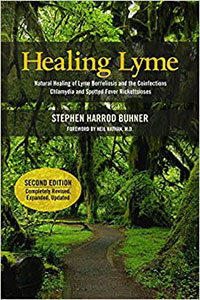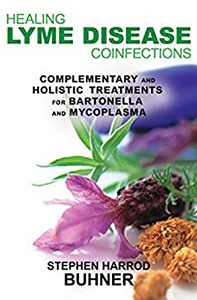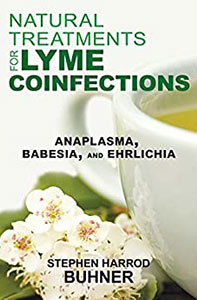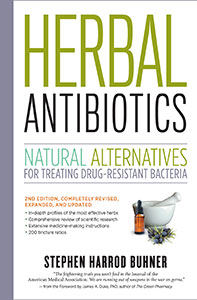Dear Stephen,
After a year of proliferating and debilitating symptoms, I was finally diagnosed with lyme. I started oral doxycycline (and will continue for at least 3 months, I’m told) and taking the 3 herbs in the core protocol as well as sarsaparilla. I’m about a month into treatment and have been able to work my way up to 4 capsules each 3x/day. (I find 4x/day to be logistically difficult.) I have a few questions for you:
1) In your book on page 78 you state that “Andrographis is perhaps the best primary herb to use in the treatment of lyme disease.” However, on page 74 in your update you say that “the single most important herb is Japanese knotweed, secondarily cat’s claw … andrographis is problematic … may produce side effects.” If one is able to tolerate it, do you still recommend andrographis or are the potential risks greater than the potential benefits? I am clearly feeling better for the first time in a long time and was planning to stay at my max dose for all herbs for at least 3 months. Is it best not to stay on this particular herb long term?
2) Should these herbs be taken with or without food? Separately from any other antibiotic/food/supplement (ie. dairy, calcium iron, magnesium, zinc etc.)?
3) Do any of these herbs help break up the encysted forms so they a can be eradicated? I’m also trying to follow the Collagenous Tissue Support recommendations and taking red root for lymph system cleansing. It’s a lot of pills to swallow in a day. Is it possible to condense the collagen protocol? If so, which supplements would be the most important? Thank you so much for your assistance. It’s a challenge riding the ups and downs of this disease and I’m trying hard to stay focused on the solution. I think I’ve looked at every book written on this subject and yours has by far been the most informative and helpful to me. I look forward to your response.
Stephen’s response:
I think andrographis is fine if you do tolerate it. Over time I have come to feel that knotweed followed by cat’s claw are the two best primary herbs followed by eleuthero followed by andrographis then stephania. (In the last book updates I did not notice that andrographis statement.) If you tolerate it (that is, no allergic reaction) there is no reason not to be on the herb long term. If you are feeling better, keep at it. If you experience digestive upset, take them with food, otherwise it doesn’t matter. Yes, andrographis helps break the encysted forms. The red root should be taken as a tincture, not a pill. The most important for the collagen protocol are glucosamine, pregnenolone, biosil.
Stephen
-
Stephen Harrod Buhner was an Earth poet and an award-winning author of twenty-four books on nature, indigenous cultures, the environment, and herbal medicine including the acclaimed book Healing Lyme: Natural Healing & Prevention of Lyme Borreliosis & Its Co-infections.
Stephen came from a long line of healers including Leroy Burney, Surgeon General of the United States under Eisenhower and Kennedy, and Elizabeth Lusterheide, a midwife and herbalist who worked in rural Indiana in the early nineteenth century. The greatest influence on his work, however, was his great-grandfather C.G. Harrod who primarily used botanical medicines, also in rural Indiana, when he began his work as a physician in 1911.
Stephen’s work has appeared or been profiled in publications throughout North America and Europe including Common Boundary, Apotheosis, Shaman’s Drum, The New York Times, CNN, and Good Morning America. Stephen lectured yearly throughout the United States on herbal medicine, the sacredness of plants, the intelligence of Nature, and the states of mind necessary for successful habitation of Earth.
He was a tireless advocate for the reincorporation of the exploratory artist, independent scholar, amateur naturalist, and citizen scientist in American society – especially as a counterweight to the influence of corporate science and technology.
View all posts













0 Comments